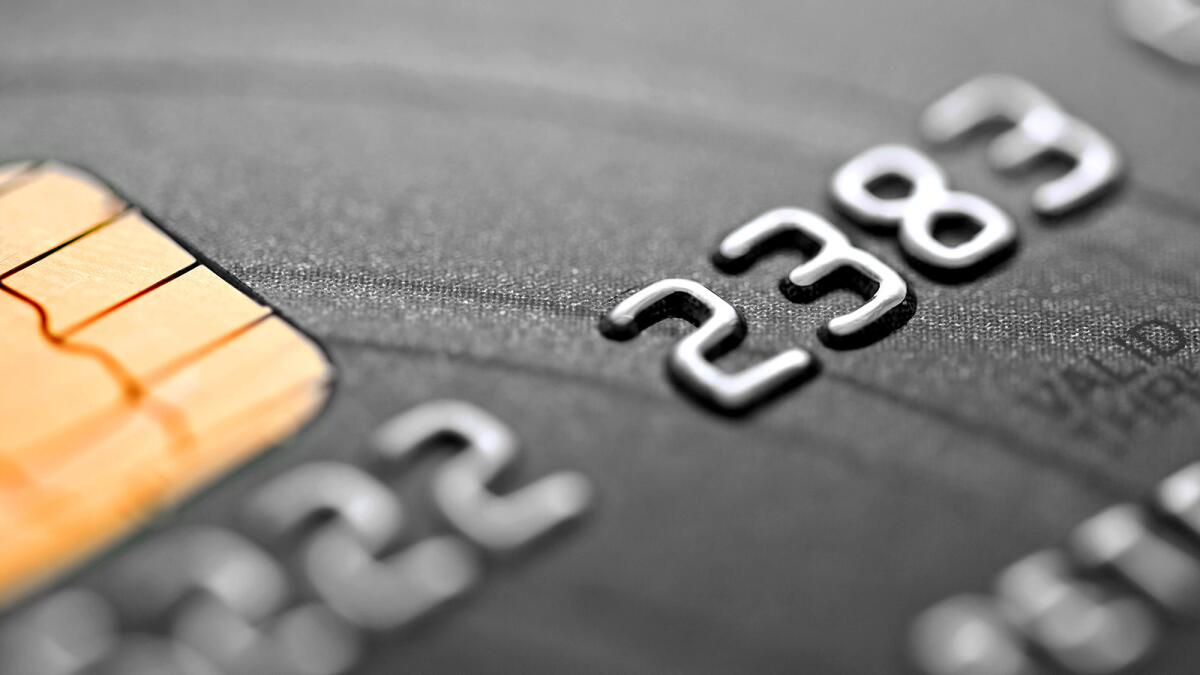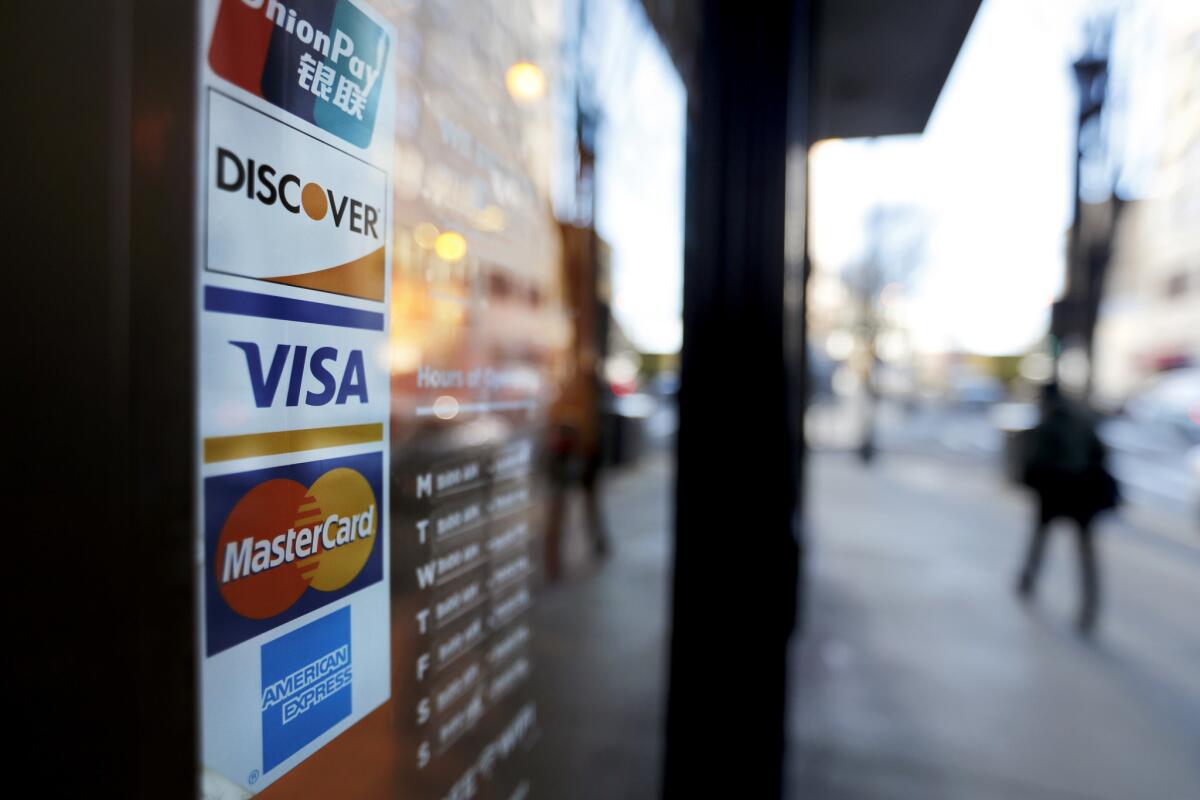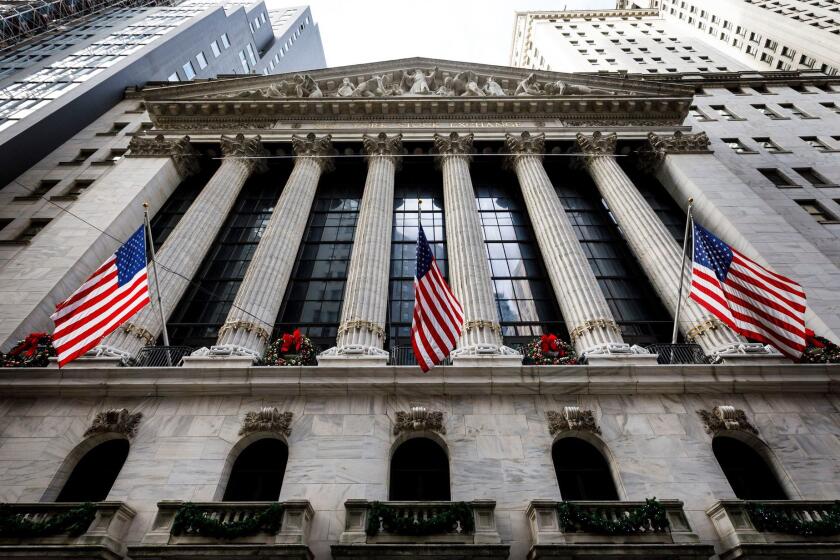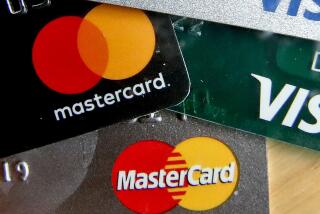Banks are handing out beefed-up credit lines that customers didn’t ask for

- Share via
It might sound like a risky strategy at a time when millions of Americans are drowning in debt: keep raising the limit on people’s credit cards, even if they don’t ask.
But that’s exactly what big banks have been doing lately to turbocharge their profits, leaving customers with the potential to rack up even bigger monthly bills.
For years after the financial crisis, Capital One Financial Corp. resisted that step for customers who looked vulnerable to getting in over their heads. In internal conversations, Chief Executive Officer Richard Fairbank characterized the restraint as a radical theology, in part because it went beyond post-crisis requirements, according to a person with direct knowledge of the discussions.
But then Capital One — known for its “What’s in Your Wallet?” slogan — reversed course in 2018, after the bank came under pressure to keep revenue growing. The company’s revenue reached a record last year.
“It’s like putting a sandwich in front of me and I haven’t eaten all day. How can I not take a bite out of it?”
— D’Ante Jones, Chase Freedom card holder
The same reversal is playing out across U.S. banking, as more customers get unsolicited access to additional credit, in what’s becoming a new golden age of plastic. The goal: to get consumers to borrow more. The question, just like in the heady 2000s, is how it will end for lenders and borrowers alike. Research shows many consumers turn higher limits into debt. And the greater the debt, the harder it is to dig out.
“It’s like putting a sandwich in front of me and I haven’t eaten all day,” said D’Ante Jones, a 27-year-old rapper known as D. Maivia in Houston who was close to hitting the ceiling on his Chase Freedom card when JPMorgan Chase & Co. nearly doubled his spending limit a year ago without consulting him. He soon borrowed much more. “How can I not take a bite out of it?”
The banks say that the increases are good customer service and that they raise spending limits carefully, discourage reckless borrowing and let customers reverse the increases at any time.
Whatever the case, the immediate result is clear: debt, and lots of it. Outstanding card borrowing has surpassed its pre-crisis peak, reaching a record of $880 billion at the end of September, according to the latest data from the New York Fed’s consumer credit panel. That’s boosting profit at top lenders like Capital One, JPMorgan and Citigroup Inc. a decade after banks cut credit limits without warning during the crunch.
“Capital One examines a number of factors before determining whether a customer is eligible for a credit line increase, including reviewing their credit and payment history, debt-to-income ratio and ability to pay,” a spokeswoman said in a statement. She said the company offers customers tools to “help them manage credit wisely.”
JPMorgan said it makes sure borrowers don’t owe too much and avoids raising limits for subprime cardholders.
“In a very targeted way, we grant credit line increases to creditworthy customers who have demonstrated consistent usage of the card and have shown strong repayment patterns,” a JPMorgan spokeswoman said. Less than 1% of increases are reversed by customers, she said.
“I didn’t know there was a way to say no,” said Jones, the Texas rapper. He was making less than $30,000 after taxes when Chase gave him access to an additional $1,500 during the 2018 Christmas season. A lot of people would celebrate access to more money. But he said he was terrified he’d spend more than he could handle. After thieves damaged his car, he tapped the full credit line and could only afford to make the minimum monthly payment.
The 2008 financial crisis hit during millennials’ formative years — creating habits and fears that have kept many away from 2019’s stock market gains.
Proactive credit line increases, known in the industry as PCLIs, emerged in the 1990s but virtually disappeared after regulators clamped down on the practice following the 2008 financial crisis. But as banks struggled to ramp up lending, PCLIs made a comeback with executives finding more aggressive ways to work within the consumer-protection laws.
U.S. issuers boosted credit lines for about 4% of cards in each quarter of 2018, according to the Consumer Financial Protection Bureau’s most recent data. That’s double the rate in 2012.
Subprime and near-prime customers got increases at a higher-than-average pace, according to the agency. That means many of the people getting boosts have blemished or limited histories of paying bills.
Consumer spending accounts for more than two-thirds of the U.S. economy, so the push has wide repercussions. Analysts warn that issuers have chosen a dicey time, late in the cycle, to get aggressive about lending. A downturn could mean losses for both banks and customers.
Other countries have rules governing PCLIs. U.K. banks agreed not to offer increases to customers in persistent debt. Canada requires borrower consent. Australia bans unsolicited increases altogether.
Credit cards have historically been banks’ highest-yielding loans. With interest rates on credit card balances reaching the highest level in more than two decades last year, U.S. issuers pulled in $179 billion from interest and fees, leading to the most profitable year on record, according to data from payment consultants R.K. Hammer. In addition to Capital One, JPMorgan and Citigroup, top card lenders include American Express Co. and Discover Financial Services.
Card companies will likely earn the highest returns in banking in 2020, according to a Dec. 11 Bloomberg Intelligence report.
Card issuers primarily make money two ways: fees and interest. The biggest portion of fees comes from interchange, which is paid every time a customer uses a card, while interest revenue is higher the more a customer owes. That encourages banks to find people who will carry the largest balance possible without tipping into default.
Experian Plc, the credit reporting company, advises banks that unilaterally raising borrowing limits is “a crucial step” in creating revenue.
Lawmakers have put some protections in place. The Credit Card Act of 2009 requires banks to consider customers’ “ability to pay” before boosting limits. In practice, that means calculating whether a consumer would be able to make the minimum monthly payment due if the entire credit line were used. With minimum payments typically around 2% of the balance, customers need to be able to cough up roughly $25 a month for every $1,250 in credit. In reality, making payments at that pace takes years, accruing interest that can surpass the amount of the original purchase.

Capital One was one of the first card issuers to use big data decades ago to target individual customers, pioneering concepts like teaser offers and tailored interest rates, which helped it reel in and manage less-than-perfect borrowers. After the financial crisis, its restraint on upping limits meant forgoing some profit, but that didn’t stop the steady climb of its shares.
But after the stock slipped in 2017, executives came under pressure to show they could meet growth targets. They eventually tweaked their models to offer increases to more customers, betting on a quirk in human behavior, according to the person with knowledge of the decision, who asked not to be named discussing the talks. The firm’s analyses showed people tended to keep their card utilization steady, even after line increases. In other words, someone who used 80% of their credit line before the boost would typically use the same percentage afterward, generating more revenue.
Other researchers had come to similar conclusions. For consumers who carry balances on their cards, “nearly 100% of an increase in credit limits eventually becomes an increase in debts,” according to a working paper by Scott Fulford and Scott Schuh for the Federal Reserve Bank of Boston. About half of U.S. credit card accounts carry a balance each month, the CFPB said.
Capital One said a customer’s ability to pay down debt “has been and continues to be a fundamental consideration in our decisioning process.” The company’s tools for helping customers keep card use in check, it said, include credit lines that start low and increase gradually over time.
“Acting in the best interest of our customers is our paramount consideration at every step of our credit decisioning process — every policy, practice, discussion and service we offer is grounded by that core principle,” it said.
Since 2016, credit card debt has been growing at a faster rate than any other type of consumer debt, even student loans, according to a September report by Morgan Stanley strategists. “Household balance sheets may be more stressed than we realize,” they wrote.
Even with the U.S. economy humming — the lowest jobless rate in a half-century, stocks setting record highs and wages inching upward — the share of credit card borrowers who are at least 90 days past due is expected to reach the highest level this year since 2010, according to a TransUnion study in December. At the same time, the share of seriously late payments in home, auto and unsecured personal loans is projected to fall.
Younger borrowers are hurting the most. The number of cardholders between the ages of 18 and 29 at least 90 days behind on payments has reached the highest level in almost 10 years, according to the Federal Reserve Bank of New York.
Many cardholders assume they wouldn’t get limit increases if their banks didn’t think they could handle them, said Carey Morewedge, a Boston University marketing professor.
“I don’t think consumers have a clear idea of how much they can afford to float on a credit card,” he said. “Consumers may be inferring from the increase that the credit card company believes they’re capable of taking on more debt.”
More to Read
Inside the business of entertainment
The Wide Shot brings you news, analysis and insights on everything from streaming wars to production — and what it all means for the future.
You may occasionally receive promotional content from the Los Angeles Times.











